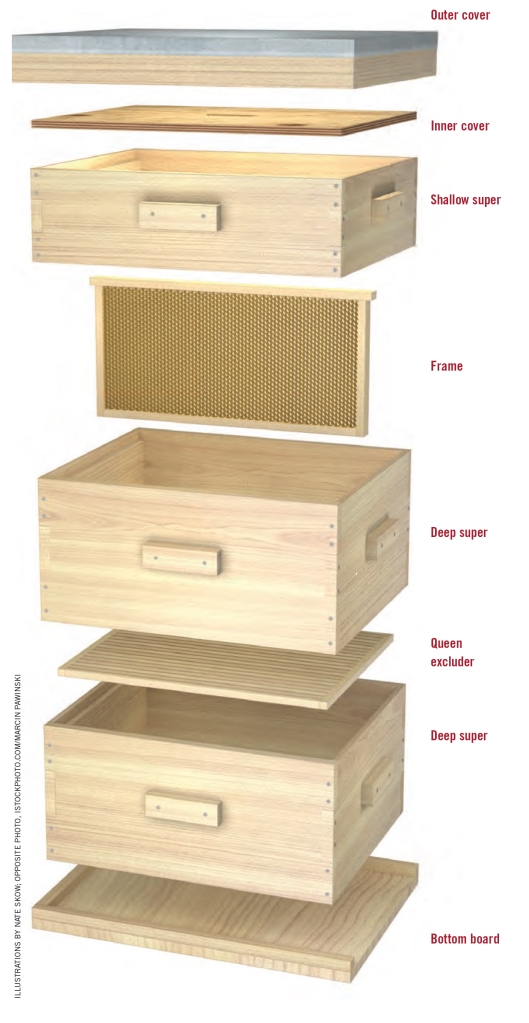Last week on Monday we got the email informing us that our package of honey bees had arrived. The thing with a honey bee package is, you basically have to drop everything and go pick them up, and drop them into their hive. So despite a busy life, work, sick kid schedule, we went out and picked up our new fuzzy friends that afternoon.
We had two friends stop out to watch us dump our new bees in to hive No. 3. It was fun to share the experience with newbies (new-bees?). Everyone suited up in protective gear and we had an uneventful dumping of the bees.
The type of bees we got this year is Italian; which is the type that we’ve always gotten. That being said, we wonder if our hive No. 1 bees are a different kind. They, the hive number one bees, are very dark and very aggressive…and very productive and prolific. The new Italian hive number three bees are very light and docile. We swear they must be two different types of bees. Carniolan is the other type of bee available from our supplier but those are supposed to be docile too, just like the Italian ones. Who knows. Regardless we learn the temperament of our bees and act accordingly.
We checked yesterday and confirmed that hive No. 3’s queen did get out of her cell and the bees had started making comb. Both hives are getting sugar water, though hive No. 1 doesn’t really need it. We’ll stop supplying that hive this week. All the crab apples in our yard are in full bloom as well as ground flowers and tree pollen. There is plenty of food for our bees as we go into May.
Here are photos from “bee day” 2016.

This is what it looks like when you’re nervously waiting at the desk to receive your bees.

New this year are these injection molded bee boxes. They lack the charm of the old wooden boxes, as seen below. The white stuff on top is fondant, which we use to plug the queen box – so she can eat her way out over the course of a few days. The bees need to get use to her, thus the multi day adjustment period. Keen eyes can spot a queen box from last year in the background.

Gear ready to be the new hive No. 3. Bottom board, a coroplast sleeve for the board, the outer cover and inner cover. A bee box full of tools. in the background a box of 10,000 bees waiting to go in their new home.

Christine dumps the new hive No. 3 bees into their new home. They start out with just a deep box until they’re established. Hive No. 1 towers in the background.

10,000 bees checking out their new home.

The queen box hangs from a metal strap in the center of the hive. The bees will spend up to five days getting use to her, before she (and they) finally eat through the fondant plug.

A rare shot of me helping out with the frames.

We have guests to watch us dump bees. This is after we’ve dumped the bees and replaced the frames. The inner cover is on and the bee box is leaning up at the hive entrance. We placed a stick in the box to help any tired bees climb up into the hive. Christine prepares sugar water in a white bucket to go on top of the inner cover.

Sugar water goes on top of the inner cover of hive No. 3.



















